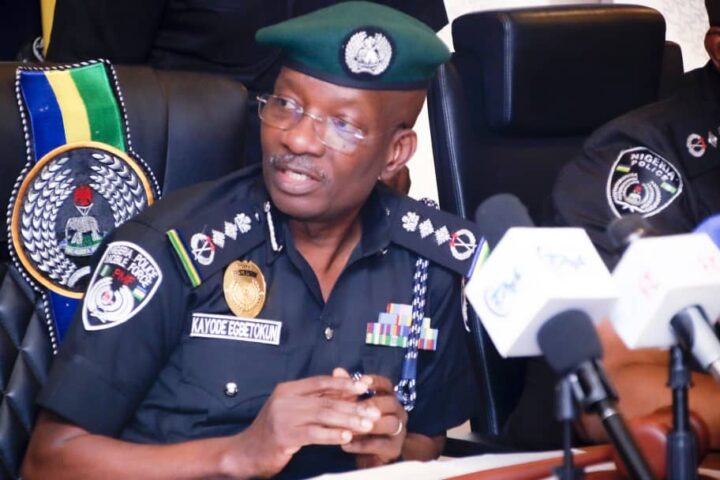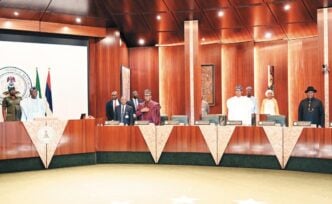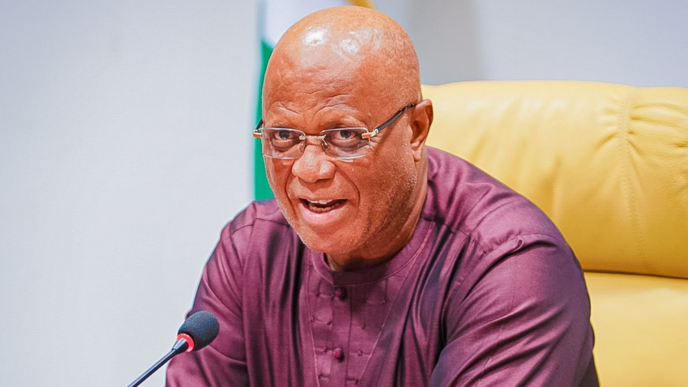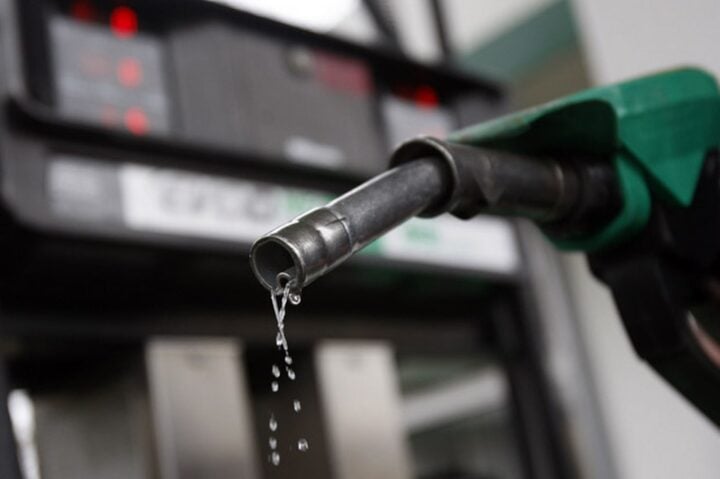Kayode Egbetokun, inspector-general of police.
On August 1, hundreds of Nigerian youths trooped out to the streets to demand solutions to the country’s surging inflation and persisting insecurity.
Organisers dubbed it the #EndBadGovernance protest ’10 days of rage’ and filed a long list of ultimatums that needed to be met.
Before the start date, however, some citizens began their demonstrations. Some youths in Niger state marched through the Abuja-Kaduna expressway in Suleja LGA of the state while chanting anti-government slogans.
Although the organisers said the demonstrations would be peaceful, a flout of the starting time already set off alarm bells for security agencies. Law enforcement agencies and international bodies, including the United Nations (UN), had warned that the protests could be hijacked by hoodlums and “unscrupulous agents”.
Advertisement
What followed in the coming days was characterised by looting, vandalisation of properties, subversion, and deaths.
To manage the situation, security agencies were immediately deployed to quell the rising tensions.
Almost immediately, reports of violence began to trail the interventions. Citizens accused the police of deploying excessive force to manage the situation and infringing on their rights to a peaceful protest.
Advertisement
But Kayode Egbetokun, the inspector-general of police (IGP), dismissed the reports as fake news, insisting at every press conference that the police carried out their duties professionally and were focused on “protecting” citizens.
SOME INCIDENTS
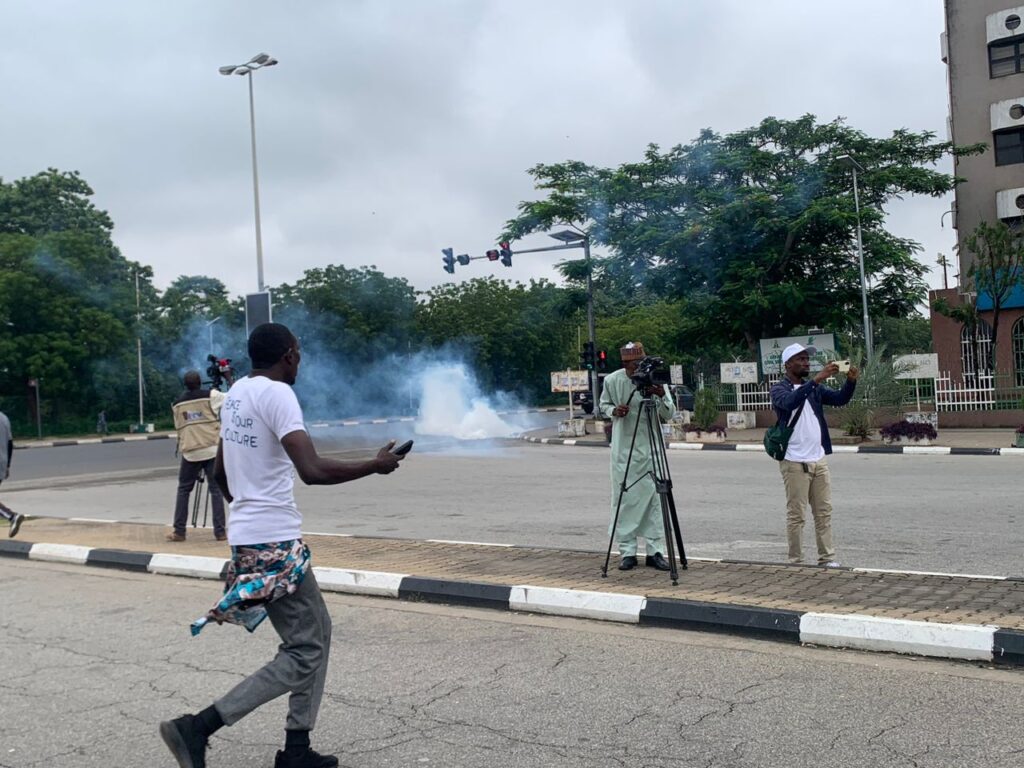
The IGP also said the police did not shoot at protesters.
“Instead, what we had were attacks on security agents during the protest,” he added.
Advertisement
On August 2, Amnesty International said it received reports of 13 people killed by security agencies as of the previous night — six in Suleja, Niger; four in Maiduguri, Borno; and three in Kaduna.
According to the human rights organisation, dozens were also injured due to “violent crackdowns” by authorities.
“Our findings, so far, show that security personnel at the locations where lives were lost deliberately used tactics designed to kill while dealing with gatherings of people protesting hunger and deep poverty,” Amnesty International said.
Amnesty said the fierce clampdown appeared to be part of a wider plan to find justification for depriving people of the right to peaceful protest.
Advertisement
Later that same day, there were reports of a female protester collapsing in Abuja after police fired tear gas to disperse peaceful protesters at the MKO Abiola Stadium.
The demonstrators were chanting from a moving van when they were suddenly surrounded by the operatives, who then opened multiple rounds of tear gas at the crowd.
Advertisement
Some of the demonstrators and journalists ended up in the drainage channel as they attempted to flee from the fumes, sustaining injuries in the melee.
Barely 24 hours later, security agents shot at protesters and journalists at the Abuja stadium, bringing the protest to an abrupt end.
Advertisement
After the police fired tear gas canisters at the demonstrators, a team of masked men, suspected to be operatives of the Department of State Services (DSS), began to shoot at persons in the vicinity, including TheCable and Premium Times journalists. A vehicle belonging to one of the reporters was marred with bullet dents.
In Abuja, Yakubu Mohammed of Premium Times was also attacked and injured by police officers who hit him with the butt of their guns and their batons and caused injuries to his head while covering the protest.
Advertisement
WHAT CONSTITUTES EXCESSIVE FORCE?
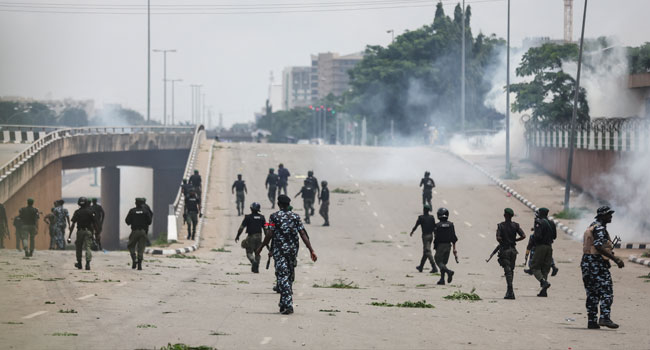
There is no universally agreed-upon definition of what constitutes excessive force. This is because contexts vary globally and no two officers are the same, based on how they react to a situation. However, while police require a certain amount of effort to compel compliance by an unwilling subject, there are clear indications when the force exceeds the minimum standard.
According to the Police Brutality Centre, excessive force is a type of brutality that goes beyond what a reasonable police officer uses to question or apprehend a person. This means officers are only required to use the minimum force necessary to contain a situation safely.
Wherever possible, law enforcement officials should use non-violent means to achieve a legitimate law enforcement objective before resorting to physical force, according to a United Nations Office on Drugs and Crime (UNODC) framework.
“Even under international humanitarian law, we call it the ‘principle of proportionality’,” Inibehe Effiong, human rights lawyer, told TheCable.
“It is important for the response of the law enforcement agencies to be proportionate to whatever situation they are responding to.
“The statement by the IGP that the police did not deploy excessive force is flat false; even the IGP knows that is not the case. Nigerians witnessed excessive force being deployed by the police even in situations where protesters were entirely peaceful; police still attacked people.
“These attacks were in different forms, from live rounds that were fired and people were killed, to the tear gas canisters that were shot, water cannons and even to police dogs, to even physical assault — all these are excessive force (in this situation).
“The Nigerian police does not have a crowd control policy. If they have it, it is either redundant or colonial, It is not consistent with human rights.”
Effiong added that even when the police know the right way to deal with a crowd, they choose not to, leading to unlawful attacks, damage, and often, loss of lives.
THE DENIAL OF LIVE AMMUNITION
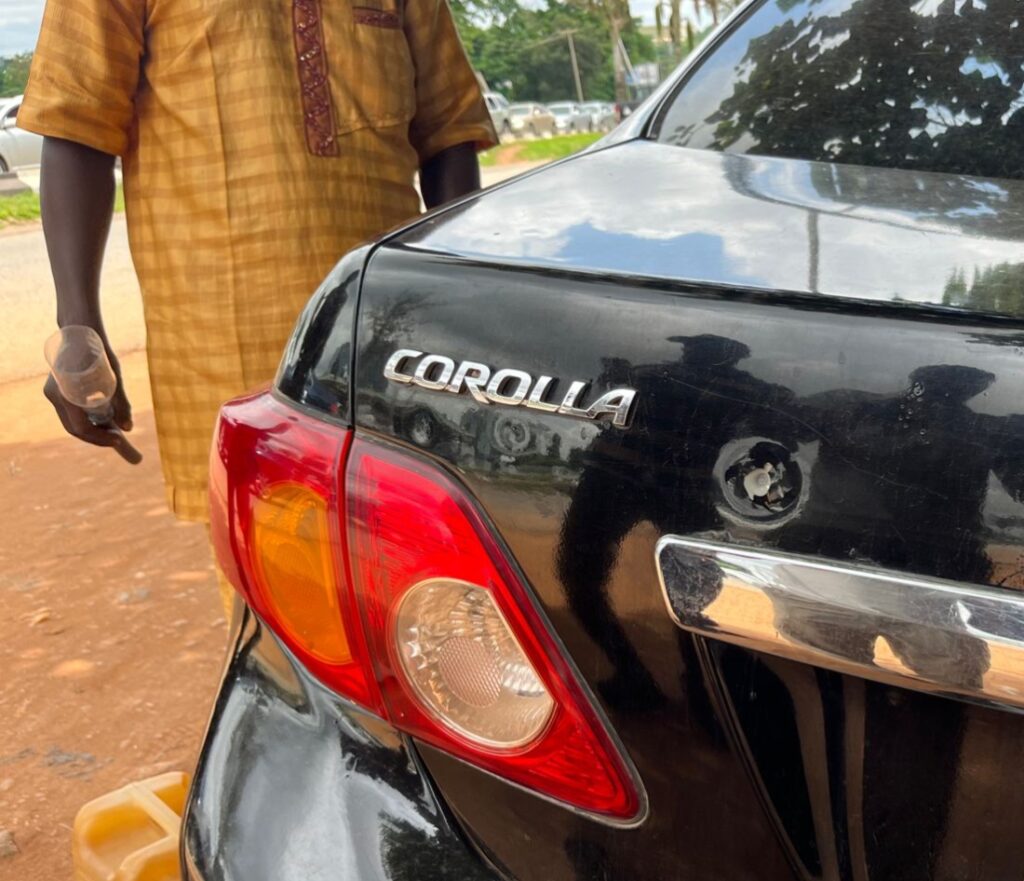
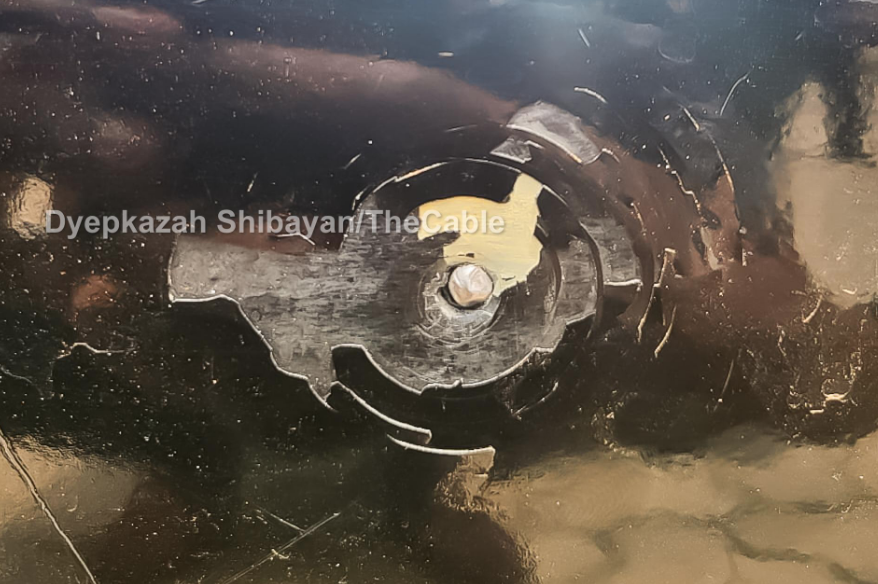
A consistent claim from the police has been the denial of the use of live ammunition.
Egbetokun insisted that neither police nor military officers used live rounds on protesters but instead focused on protecting them.
Amnesty International claimed verified video evidence showed security agents shooting at protesters at close range, without warning.
“Nigerian security forces have been consistently using firearms to manage public gatherings — with impunity. It is unlawful to use live bullets to manage public gatherings,” the human rights organisation said.
Examining the bullet dents on the Premium Times reporter’s car, Timothy Avele, a security expert, told TheCable that it “seems like a live bullet impact, especially if shot from a distance”.
Avele relied on photographs of the bullet shells from the scene to make the judgment.

Although forensic evidence could not immediately confirm the report owing to an absence of the shells, Avele added that rubber bullets mostly melt after impact.
“They (police) are not supposed to go there with live bullets at all,” the expert added.
“More monitoring by police managers is badly needed.”
On August 7, a soldier shot a 16-year-old protester in Zaria, Kaduna.
Onyeama Nwachukwu, army spokesperson, confirmed the protester’s death.
Add a comment
